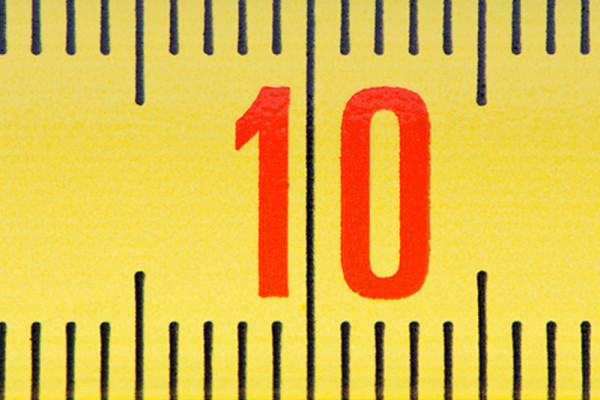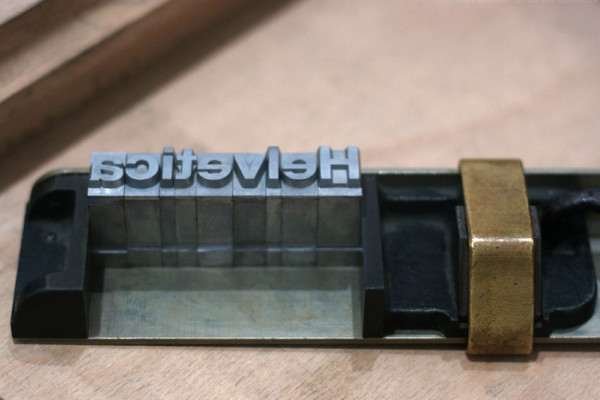Today it seems that designers are a dime a dozen; anyone with a computer and a copy of Photoshop considers themselves a bona fide graphic designer. How can you possibly tell who’s good and who’s not? Simple, just ask yourself these 10 burning questions before hiring one. (And designers, double check that you can pass these benchmarks as well.)
1. How strong is their portfolio?
This is paramount, because at the end of the day, you are either going to like the designer’s work or you aren’t. Be sure to look for actual projects done for real clients, preferably with descriptions and/or case studies. Rather than judge portfolio pieces solely on aesthetics in a vacuum, examine the problem and the solution that the designer offered.
Is the solution viable? Does it accomplish the client’s goals? While real projects may not always be the prettiest, they are based on situations that might reflect yours. By assessing the portfolio, you should be able to scope out a designer’s true skill and abilities.
2. How much industry experience do they have?
This one comes with a big caveat: experience isn’t everything. A designer could have ten years of experience yet produce horrendous design, while a kid just starting out could be the next Milton Glaser. Thus experience can be highly subjective.
However, it shouldn’t be completely discounted; an experienced designer is familiar working with clients, deadlines, and web/print standards. A lot can happen in real life, and there are some things that only years of experience can prepare for.
3. Do they have any formal design training or education?
Now, before all the designers who are self-taught jump on me, let me preface this by saying it is the general rule but there are always exceptions. There are some amazing designers who have never taken a design class in their life. And there are mediocre designers who have a master’s degree.
That being said, it is still a safer option to look for formal training: a lot goes into design theory and execution. It’s much more than just playing around on the computer.
Design is much more than just playing around on the computer. Click To Tweet
The type of training can be anything from graphic design certification to a bachelor’s in graphic technology. A formal education strengthens innate skills, teaches a designer how to use software efficiently, and establishes a strong foundation of design rules. While some rules are meant to be broken, this can only happen after they’ve been mastered.
4. Are other clients happy with their work?
One of the best ways to find out if you’ll be satisfied with a designer is if others are happy with their work too. Make sure your designer has multiple testimonials from actual clients. Check out some of these clients and confirm that they are real people who work at real companies. At the very least, ask your designer to provide you with some references, just as any job interviewer would. If they hesitate or don’t have any, that should be a red flag.
5. Are they within your budget?
Cheaper is not always better. I will say again, cheaper is not always better. Now, you should have some type of a design budget in mind and your designer should obviously fall within that. But be realistic with your budget.
If you think setting aside $100 for a logo is more than reasonable, think again. Do your research. Find out what a realistic range should be, and what good designers in your area are charging.
6. Where are they located?
A designer’s geographical location has two ramifications. First, working with a local designer is usually preferable for many people. It assists the workflow of the project, communication, and a host of other intangibles. But, if you are totally comfortable working with someone several states away, then that is a viable option as well.
Secondly, it is a worthwhile endeavor to stay within your culture. No, I am not being ethnocentric.
What this means is, if your company is located and operates in the States, it would be wise to choose a designer who also resides in a similar culture, be it the U.S., the UK, Australia, or Canada. The simple reason has to do with very real cultural differences; while the world is fast becoming smaller, it doesn’t negate how widely varied cultures can be across the globe.
To bring it to a practical level, if your company operates in the U.S., and you hire someone from India to do your design, there might be some serious cultural clashes. Obviously, language differences can affect your communication with this person, but there are also very real differences in how cultures react and work in a professional environment.
For example, did you know that the U.S. is considered a low-context culture?
That means we are individualistic, direct, and less formal. But many Eastern cultures are high-context, which are collectivist, indirect, and very formal. It also means that a subordinate will generally not speak up if something goes wrong. Do you really want to hire someone who won’t inform you of problems?
Additionally, even subtle things, like the meaning and association of colors, can vary drastically across cultures. It should be clear that in order to connect best with your target audience, a designer that lives and breathes your audience’s culture is your best choice. Companies often make the mistake of outsourcing design work to save a buck, yet unwittingly end up miscommunicating with their target audience instead.
7. Does their personality click with yours?
Obviously you shouldn’t work with someone who you don’t like, don’t trust, or don’t get along with. This is another reason why it’s a good idea to be able to meet with your designer in person, or at the very least call them and speak with them before hiring. Little things like formality differences, energy levels, and even what time of the day works best for you all can make a huge difference in how well you work with your designer.
8. How are their communication skills?
Hire a designer who can write clear, comprehensive copy on their website. Keep an eye out for obscene language, poor grammar, and typos. While everyone makes mistakes every once in a while, a designer who habitually doesn’t pay attention to details sends a sloppy message.
Hire a designer who is easily accessible and returns your emails and calls in a timely manner.
They should be able to articulate their design decisions to you in a way that makes sense, and happily answer any questions. Your designer should listen intently to what you have to say, and convey that they’ve understood your message. You should be kept up to date on your project’s progress, as well as be informed about what to expect next. A good designer realizes there is nothing worse than being kept in the dark during a project.
9. Do they have an established process in place?
Beware of any designer who doesn’t take down extensive details about your project, or who has a one-day turnaround. Do they go over an in-depth briefing or consultation with you? Do they ask multiple questions about your project? Does their process include time for brainstorming, sketching, and reflection?
A strong process preludes strong results. Click To Tweet
If not, find someone who will dedicate the time, thought, and energy that your project deserves. A strong process preludes strong results.
10. Do they have additional credentials or affiliations?
Although not a requirement, a designer who has additional credentials or recognitions is a big plus. Any type of awards won or honors received signifies exceptional talent and recognition in the field.
A designer who’s a member of design organizations (such as AIGA or Printing Industries of America) and user groups demonstrates their professionalism and dedication to the field. These are all great bonuses to keep in mind as you search for a good graphic designer.
In the end, if you follow these guidelines, you will gain a designer who not only is an expert in their field, but is a great ally to your business as well.
So, what do you think?
Are these too many requirements to expect from one person, or should there be more? Do you have any success or horror stories working with a designer?





1 Comment. Leave new
Completely agree with all of these! I am a designer myself but if I was ever to hire another designer or creative that is in a similar field I would have a very similar checklist.
I am torn a little on #2. Like you said, experience does not necessarily mean a better designer. I think the consideration should be what you are hiring them for. Many fresh designers have amazing design work but dont have the business & technical knowledge that an experienced designer might. Things like prepress, and working with vendors, etc would go right over their head.
You never have the option to stop learning as a designer. Which is why I love it!